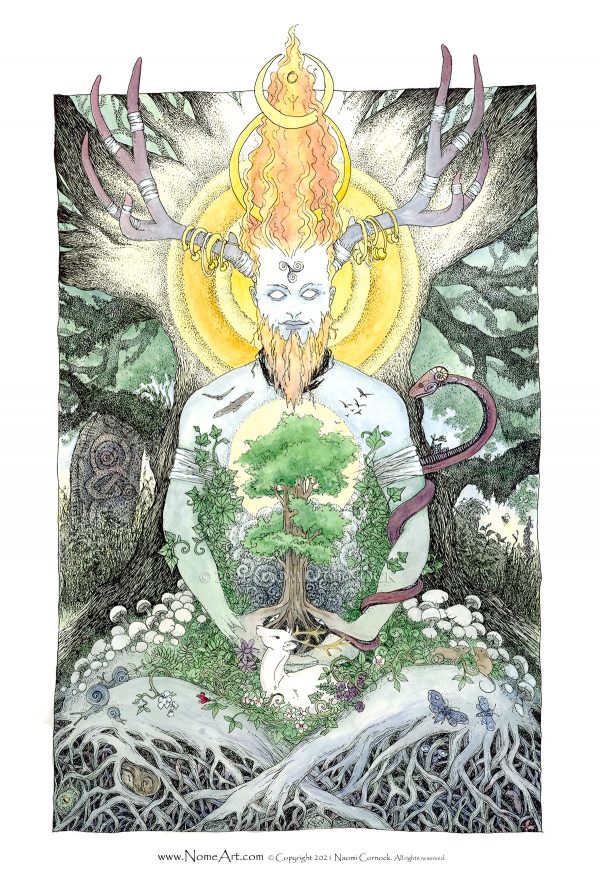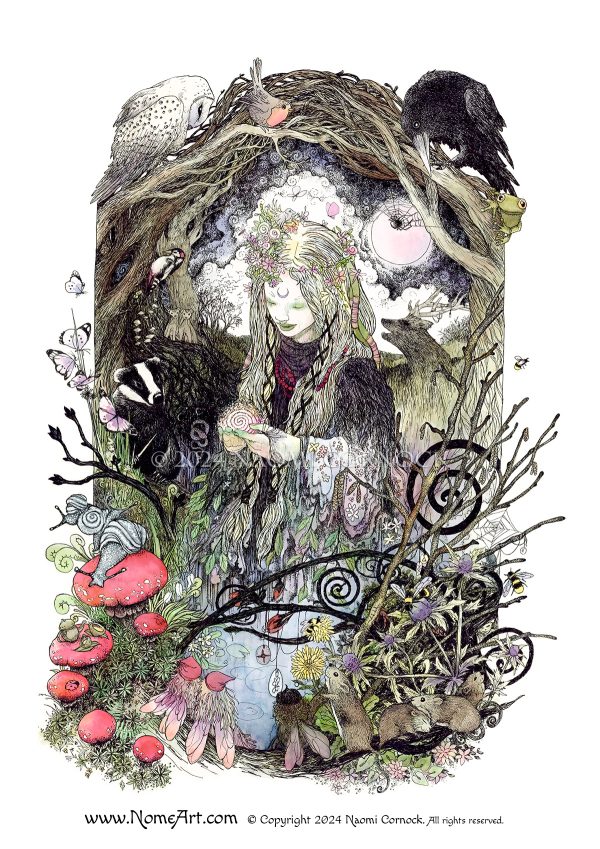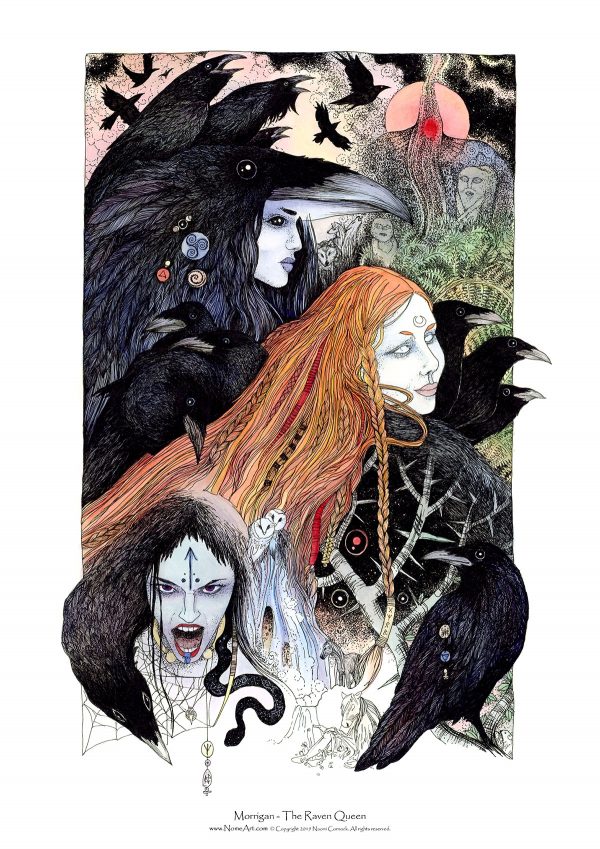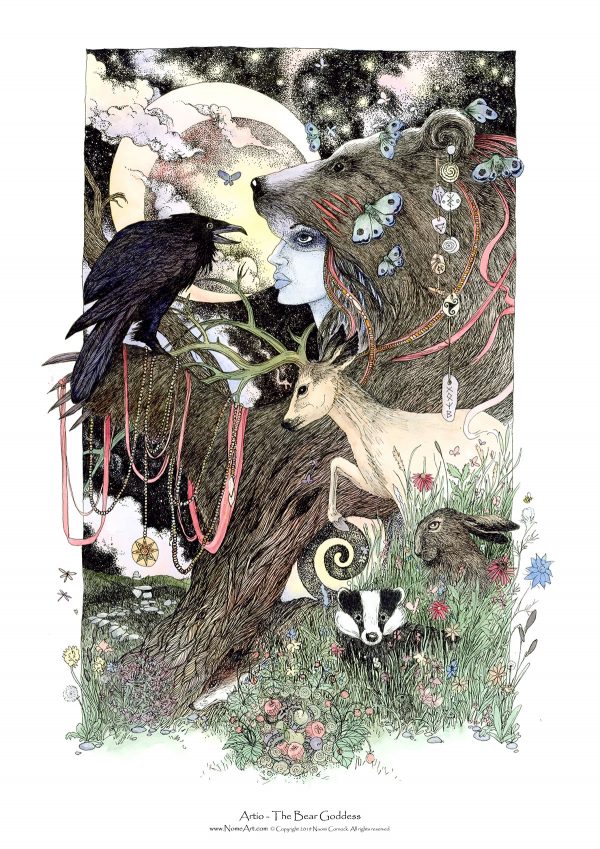Description
I initially created this piece as part of three paintings for a book exploring mythology surrounding the Mespotanian goddess Inanna, written by Wyn Abbot. This is why I have Lilith in her relation to Inanna and the story of the Huluppu Tree. This is before Lilith becomes demonised with the rise of Patriarchy.
“Lilith was considered to be the dark aspect of Inanna, and as we shall see, so was Ereshkigal, she was associated with both Inanna and her sister Ereshkigal. She has been vilified, abandoned, and banished. Lilith was the first woman, the first ‘wife’ of Adam. As his equal, she refused to submit to Adam, and she refused to accept that she was inferior to him. Her first appearance in the story of Inanna, is in the story of the huluppu tree, when she resides within the trunk, and is banished by Gilgamesh.” (Inanna Queen of Heaven – Wyn Abbot)
Across cultures, she’s depicted as a dark goddess associated with transformation, sexuality and death. Her Sumerian origins, evolving into various counterparts across different pagan pantheons, like Hekate, Kali, Cerridwen and The Morrigan.
“She is the Dark Goddess and has known many names and many faces, she emerges as Hekate in Greek mythology, as the Welsh, Hindu Goddess, Kali, the Irish ‘The Morrigan’ and other powerful goddesses who are often referred to as dark goddesses, or those who would incite fear or death. As with Hekate, Lilith was associated with ghosts and creatures of the night. As with The Morrigan, and Cerridwen she could shape shift. As with Kali, she was associated with cutting down those who would harm, without mercy.” (Inanna Queen of Heaven – Wyn Abbot)
In the painting Lilith is emerging from the Huluppu Tree.
The tree of creation stands firm and grows strong on the banks of the Euphrates, this is the time before being rescued from the great flood and planted in Inanna’s garden in Uruk. Lilith is rising from the tree trunk with snakes writhing around, into and out of her and the tree, representing her sexual creative and transformative energy.
The large snake below winding through the roots of the tree is the serpent who could not be charmed, which always fit perfectly for me with Lilith’s independence and defiance of male rule. In the canopy of the tree is the Anzul in his nest connecting the heavens to the earth. The owls on either side of Lilith represent the connection to death and the underworld. Around the tree In the foliage of Rose and Jasmine a queen lioness guards the land and further in the distance on the banks of the great Euphrates river the young maiden Inanna beats her sacred drum to the heartbeat of the earth and dances in the new day.
I wanted the piece to portray the wild, elemental energies of nature, before the rigid rule of civilised man made its mark upon the land.
Additional information
| Weight | N/A |
|---|---|
| Dimensions | N/A |
| Size | A3, A4, A5 Altar Card, A6 Mediation Card |





